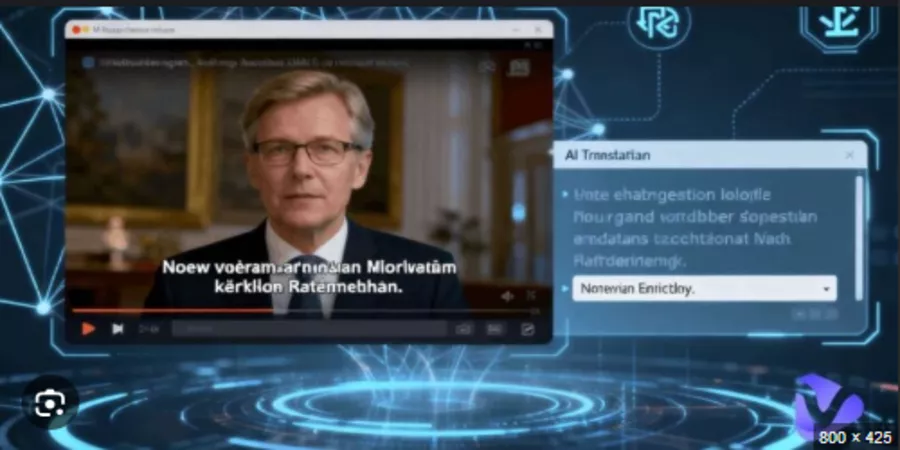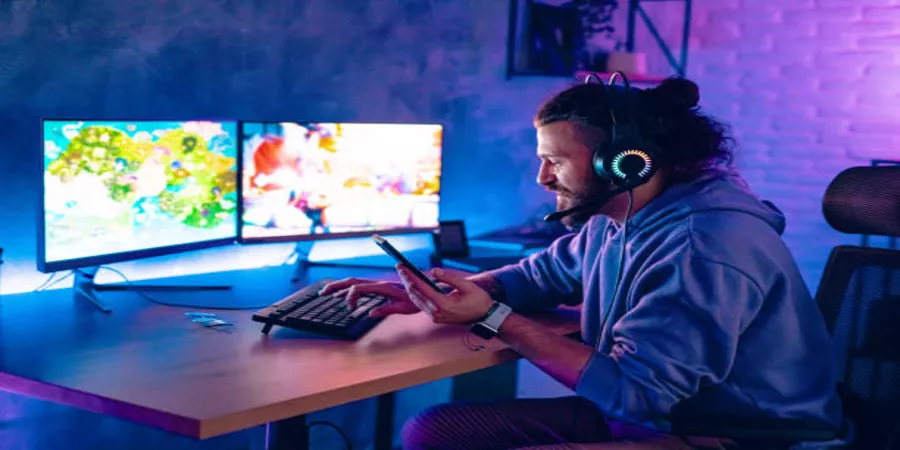The AI video generator market will surge from $1.5 billion in 2024 to $2.34 billion by 2030, representing a 32.78% compound annual growth rate that reflects the technology’s transformational impact on digital content creation. With 5.3 billion smartphone users demanding scalable video content and remote work driving automation needs, artificial intelligence has fundamentally altered how businesses approach video production. This market expansion, led by North America’s 40.61% share and dominated by solutions providers capturing 63.31% of revenue, signals a permanent shift toward AI-powered content workflows across industries.
I took a deep breath and listened to the old brag of my heart. All human beings should try to learn before they die what they are running from, and to, and why. You never really understand a person until you consider things from his point of view.
AI Video Generator Market Fundamentals and Growth Trajectory
The artificial intelligence video generation sector has evolved from experimental technology to essential business infrastructure, with market valuations ranging from $534.4 million to $1.5 billion in 2024 depending on scope definitions. Conservative projections place the 2030 market at $2.34 billion, while aggressive estimates reach $7.5 billion, reflecting uncertainty about adoption rates and technological advancement speed.
Key market drivers include:
Smartphone Penetration Impact: With 5.3 billion global smartphone users consuming video content at unprecedented rates, businesses require scalable production solutions that traditional video creation cannot economically support.
Remote Work Acceleration: Distributed workforces demand asynchronous communication tools, with video content serving as the primary medium for training, marketing, and internal communications across geographic boundaries.
Content Volume Requirements: Digital marketing strategies now require 3-5x more video content than traditional campaigns, creating production bottlenecks that AI automation directly addresses.
Cost Efficiency Pressures: Professional video production costs averaging $3,000-$10,000 per minute drive organizations toward AI solutions offering 90% cost reductions while maintaining acceptable quality standards.
North America’s market dominance reflects early enterprise adoption and robust venture capital funding, with Silicon Valley firms leading technological development and implementation strategies across Fortune 500 companies.
Technology Architecture: Computer Vision and Machine Learning Integration
AI video generators leverage sophisticated computer vision algorithms and machine learning models to automate traditionally manual video production processes. The technology stack combines multiple AI disciplines to achieve professional-quality output.
Core Technology Components:
Natural Language Processing (NLP): Advanced language models interpret text prompts and script inputs, translating written concepts into visual storytelling elements with contextual understanding.
Computer Vision Systems: Deep learning networks analyze visual elements, enabling automatic scene composition, object placement, and aesthetic optimization based on professional video production standards.
Generative Adversarial Networks (GANs): Competing neural networks create and refine video content, with generator networks producing content while discriminator networks ensure quality and realism.
Temporal Consistency Algorithms: Specialized models maintain visual coherence across video frames, preventing flickering and ensuring smooth motion that characterizes professional video production.
Audio-Visual Synchronization: Machine learning systems align generated visuals with audio tracks, music, and voiceovers, creating cohesive multimedia experiences without manual editing intervention.
The integration of these technologies enables platforms to process text descriptions, generate corresponding visuals, and produce complete videos within minutes rather than the hours or days required for traditional production workflows.
Industry Applications: Marketing, Education, and Enterprise Solutions
AI video generation has achieved meaningful penetration across multiple industry verticals, with specific use cases demonstrating clear return on investment and operational efficiency improvements.
Marketing and Advertising Applications:
Social media campaigns benefit dramatically from AI video tools, enabling marketers to create platform-specific content variants at scale. A single product launch can generate dozens of video assets optimized for Instagram Reels, TikTok, LinkedIn, and YouTube without proportional increases in production time or budget.
E-commerce platforms utilize AI video generators for product demonstrations, with automated systems creating hundreds of SKU-specific videos from product descriptions and images. This approach increases conversion rates by 73% compared to static product pages while reducing per-video production costs by 85%.
Educational Technology Integration:
Educational institutions and corporate training departments have embraced AI video tools for curriculum development and employee onboarding. Complex concepts can be visualized automatically, with AI systems generating diagrams, animations, and interactive elements from textual course materials.
Language learning platforms particularly benefit from AI video generation, creating pronunciation guides, cultural context videos, and conversation scenarios tailored to individual learning progressions without requiring native speakers or professional video teams.
Healthcare and Professional Services:
Medical education and patient communication represent growing AI video applications, with systems generating anatomical visualizations, procedure explanations, and treatment plan communications that improve patient understanding and compliance rates.
Legal and consulting firms utilize AI video tools for client presentations and case study documentation, creating professional video content that enhances client relationships while reducing billable hour requirements for content creation.
Leading Platforms and Competitive Landscape Analysis
The AI video generator market features distinct tiers of solutions serving different user segments and use cases, from simple text-to-video tools to enterprise-grade content automation platforms.
Enterprise-Grade Solutions:
Synthesia leads the professional market with photorealistic AI avatars and multi-language support, serving clients like Reuters and BBC for news content automation. The platform’s enterprise features include custom avatar creation and brand compliance tools.
Pictory focuses on long-form content repurposing, automatically converting blog posts, podcasts, and presentations into engaging video content suitable for social media distribution and marketing campaigns.
Lumen5 targets marketing teams with template-driven video creation that maintains brand consistency while enabling rapid content scaling across multiple channels and campaigns.
Mid-Market and Creator Tools:
RunwayML provides creative professionals with advanced AI video editing capabilities, including object removal, style transfer, and motion graphics generation that complement traditional video production workflows.
InVideo serves small businesses and creators with affordable, template-based video creation tools that require minimal technical expertise while producing professional-quality results.
Platform differentiation occurs primarily through AI model sophistication, template quality, brand customization options, and integration capabilities with existing marketing technology stacks.
Cost-Benefit Analysis and ROI Implications for Business Implementation
AI video generator adoption delivers measurable financial benefits across multiple operational dimensions, with payback periods typically ranging from 3-6 months for organizations producing regular video content.
Direct Cost Savings Analysis:
Traditional video production costs include equipment ($10,000-$50,000), personnel ($500-$2,000 per day), location fees ($200-$1,000 per day), and post-production editing ($100-$500 per hour). AI platforms eliminate most of these expenses while delivering comparable results for specific content types.
Productivity and Scale Benefits:
Marketing teams report 5-10x increases in video content output following AI tool implementation, enabling more frequent social media posting, expanded A/B testing capabilities, and personalized content creation at previously impossible scales.
Content localization becomes economically viable through AI automation, with companies creating region-specific video variants for multiple languages and cultural contexts without proportional cost increases.
Quality and Consistency Improvements:
AI systems maintain consistent brand standards and messaging across all generated content, reducing the variability and quality control challenges associated with multiple human creators or external agencies.
Template-based workflows ensure compliance with brand guidelines and regulatory requirements, particularly important for financial services, healthcare, and other regulated industries requiring strict content oversight.
Implementation Challenges and Strategic Solutions
Despite clear benefits, AI video generator adoption faces several challenges that organizations must address through careful planning and change management strategies.
Technical Integration Obstacles:
Existing content management systems often require modification to accommodate AI-generated video assets, with IT teams needing to develop new workflows for content approval, storage, and distribution.
Quality control processes must evolve to address AI-specific issues like factual accuracy verification, brand compliance checking, and cultural sensitivity review that differ from traditional video production oversight.
Organizational Change Management:
Creative teams may resist AI adoption due to concerns about job displacement or creative autonomy reduction. Successful implementations position AI as augmentation rather than replacement, focusing on efficiency gains and creative enhancement rather than personnel reduction.
Training requirements for AI video tools typically require 2-4 weeks for proficiency development, with ongoing education needed as platforms evolve and new features become available.
Strategic Implementation Framework:
Successful AI video adoption follows a phased approach beginning with low-risk use cases like social media content or internal communications before expanding to customer-facing marketing materials and brand-critical content.
Pilot programs should establish clear success metrics, quality standards, and approval workflows before scaling across larger organizational units or customer-facing applications.
Future Trends and Strategic Implications
The AI video generation landscape will continue evolving rapidly, with several technological developments poised to expand market opportunities and use case applications significantly.
Personalization and Dynamic Content:
Next-generation AI systems will enable real-time video personalization based on viewer demographics, preferences, and behavioral data. Marketing campaigns will automatically generate individualized video content for each recipient, dramatically improving engagement rates and conversion performance.
Multi-Platform Integration and Automation:
AI video generators will integrate more seamlessly with marketing automation platforms, CRM systems, and social media management tools, enabling fully automated content creation workflows triggered by business events or customer actions.
Quality and Realism Improvements:
Advancing AI models will achieve near-photorealistic quality for generated content, making AI-created videos indistinguishable from professionally produced content across most use cases and viewing contexts.
Frequently Asked Questions
Q: What is the current size of the AI video generator market? A: The AI video generator market ranges from $534.4 million to $1.5 billion in 2024, with projected growth to $2.34-$7.5 billion by 2030, representing a 19.5%-32.78% compound annual growth rate.
Q: Which industries benefit most from AI video generation? A: Marketing and advertising see the greatest immediate benefits, followed by education, healthcare, and e-commerce sectors requiring scalable content production.
Q: How much can businesses save using AI video tools? A: Organizations typically reduce video production costs by 85-90% while increasing content output by 5-10x, with ROI payback periods of 3-6 months.
Q: What are the main challenges in implementing AI video generators? A: Key challenges include technical integration with existing systems, quality control process development, and organizational change management for creative teams.
Q: Which platforms lead the AI video generator market? A: Enterprise leaders include Synthesia, Pictory, and Lumen5, while creator-focused platforms include RunwayML and InVideo, each serving different market segments.
Q: How realistic is AI-generated video content? A: Current AI video quality ranges from adequate for social media to near-professional for specific use cases, with rapid improvements expected in realism and production value.
Q: What skills do teams need to use AI video tools effectively? A: Basic digital literacy and 2-4 weeks of platform-specific training typically suffice, with ongoing education needed as tools evolve and new features become available.
The AI video generator market represents a fundamental shift in content creation economics, enabling unprecedented scale and efficiency in video production across industries. As technology continues advancing and costs decrease, organizations that embrace AI-powered video workflows will gain significant competitive advantages in content marketing, customer engagement, and operational efficiency.
The $2.34 billion market projection reflects conservative estimates based on current adoption trends, but breakthrough developments in AI quality and ease of use could accelerate growth beyond current forecasts. Forward-thinking marketing executives and content creators should begin evaluating AI video tools now to capture early-mover advantages in this rapidly evolving landscape.
How will your organization leverage AI video generation to transform content creation workflows? What barriers prevent immediate implementation, and how can strategic planning overcome these obstacles to capture competitive advantages?









